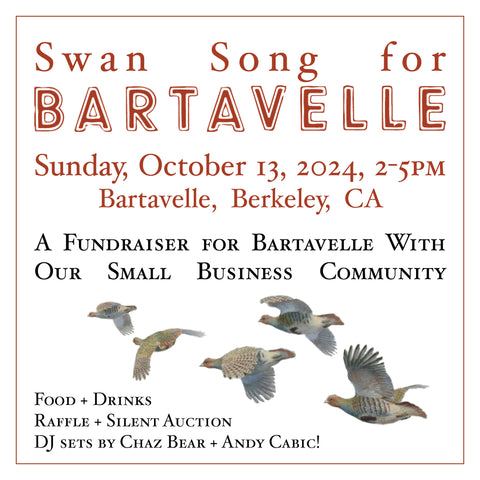
This month's Onikoroshi sakes enjoyed at our latest staff outing at Hog Island Oyster in Marshall, CA
When someone walks in the door looking for sake, I usually ask them, “What kind of sake are you looking for?” One of the most common answers I get is, “Something dry.” And these customers are in luck because there are a lot of dry sakes to choose from. However, it is important to define some of the dry styles that exist within the sake world. While you can sometimes determine the dryness of a sake by its Sake Meter Value (SMV), which measures the density of sake in comparison to water, the number can be deceiving if it isn’t on the extreme sides of the spectrum. Most sakes hover in the SMV range of -2 to +8. Anything lower than -2 will likely taste pretty sweet. While anything +8 or above will taste dry. But there are so many other factors that affect how we perceive dryness that more often than not, the SMV alone will not give you the whole picture.
I’ve found that with wine and cocktail drinkers, sakes that are considered in the common SMV range of -2 to +8 still get perceived as dry. I don’t think it’s a secret that our palettes in the U.S. have a higher tolerance for sugars than in Japan. Therefore, it’s common for me to pour a flight of sakes at the bar for a patron who wants a dry sake and they end up choosing the least dry sake in the lineup as their favorite. When a sake is advertising themselves as dry in Japan, it’s going to be +8 or above – meaning it’s not messing around and will be dry, sharp, and often higher in acidity.
This month, we are exploring Onikoroshi sakes. Historically, this type of sake was considered to be so dry that even the toughest guy on the block would get drunk. But that didn’t sound romantic enough, so instead it was referred to as a sake that is so dry it would slay demons, or Onikoroshi. With time, it wasn’t just about the dryness or the increased SMV but about how a sake with heightened acidity would pair with foods that are heavier in flavor (typically in the winter) – highlighting a clean ending that is often referred to as its sharpness. You will find that both of the sakes this month exhibit dryness but also have a pleasantly clean ending that I would describe more as refreshing than sharp.
One of the main things that sake-makers do to make a dry sake is to let the fermentation go longer until all the sugar is consumed. Temperatures can also be increased for a more rigorous ferment. Yeast and rice selection can also affect the dryness of a sake. Please read my interview with Fumiaki Matsuura, owner and toji of Matsuura Brewery about what he does to achieve a dryer style of sake.
When a brewer makes a dry sake, they want you to drink it with food. Matsuura says, “It enriches the flavor of your food and cleanses the fat in your mouth.” It’s safe to say that Gumi members are enthusiastic about food and drink, and exploring these two Onikoroshi sakes will be a celebration of both. Kanpai!
Yoko (Co-Founder, Umami Mart)

Shishi No Sato “Chokara” Onikoroshi Junmai
Matsuura Shuzo (Ishikawa, Japan)
Seimaibuai: Hattan Nishiki 65%, SMV: +8, Acidity: 1.6, Yeast: Kumamoto
Enjoy aromas of lemon and cooked white rice. Then take in flavors of umami, and a tartness that ends satisfyingly dry, with a hint of spice. This clean spiciness makes this sake primed for pairing with foods with strong flavors including mapo tofu, onion rings, or mussels escabeche. Fumiaki Matsuura, owner and toji of Matsuura Shuzo explains, “I wanted to flavor and sharpness to coexist, so I used Hattan Nishiki rice, which gives a full body flavor that expands on the palatte, so that it won’t be overpowered by oily dishes.” Recommended at room temperature or warm.

Wakatake Onikoroshi Junmai Daiginjo
Oomuraya Shuzo (Shizuoka, Japan)
Seimaibuai: Yamada Nishiki 50%, SMV: +3, Acidity: 1.5, Yeast: Shizuoka New-5
You may have seen or tried this iconic Wakatake Junmai Daiginjo sake before. While I often introduce rare or unsual sakes for Sake Gumi, I also like to feature sakes that are representative of the theme and are famous for a reason. While this Onikoroshi doesn’t hit you over the head with dryness, it is clean. Aromas of whipped cream and rice greet you, and as you sip, enjoy flavors of melon cream soda. All of this ends with a crisp ending that we loved with raw oysters and a sunomono salad at our latest staff gathering at Hog Island Oyster Company. Enjoy chilled. For extra decadance, pour a teaspoon of this sake directly into a freshly shucked oyster and sip (as shown in the photo below)!

Sake Gumi is our monthly sake subscription service with 150 members throughout the country. Join today!




Comments (0)
There are no comments for this article. Be the first one to leave a message!